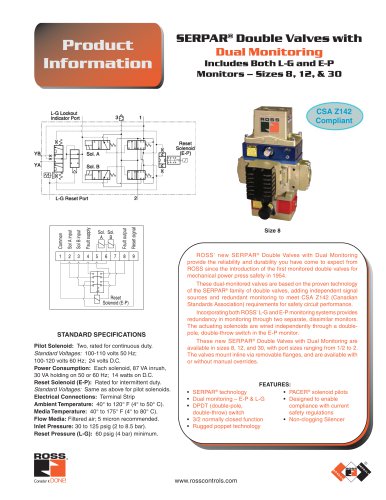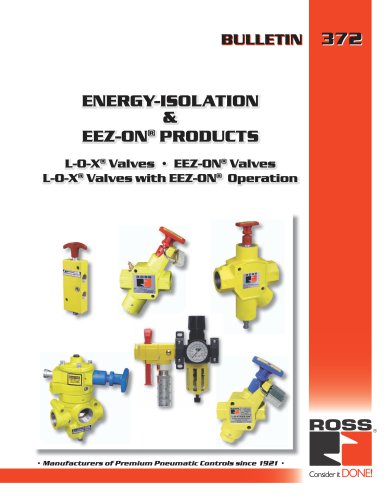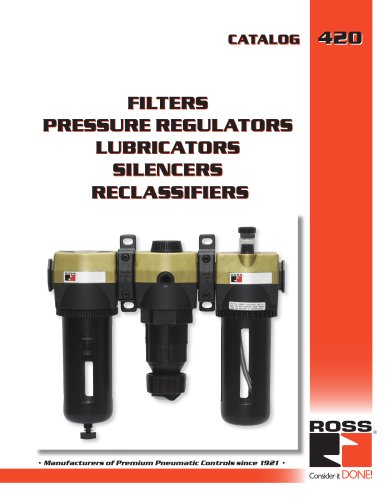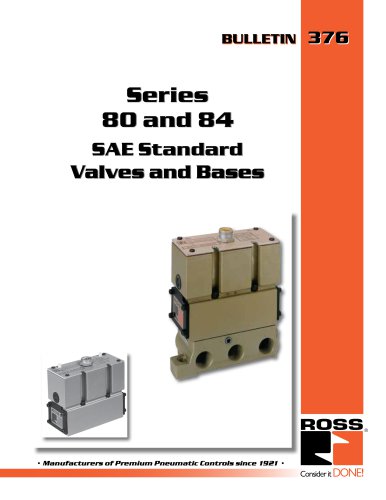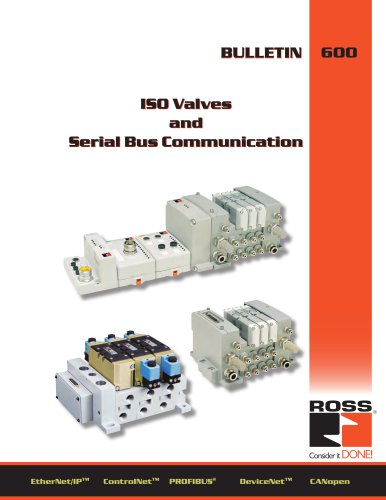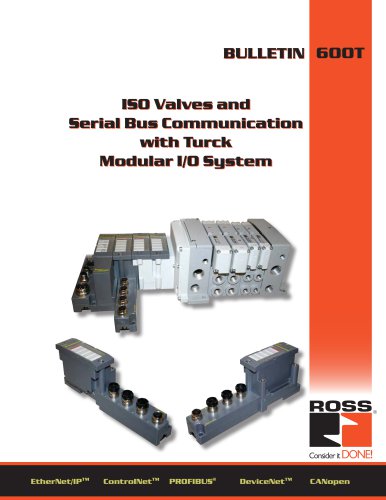
Catalog excerpts

Fluid Power Safety Overview Control Integrity Lockout/ Tagout Alternative Lockout Assessment/ Reduction
Open the catalog to page 1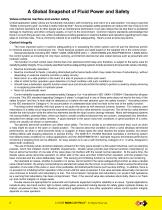
A Global Snapshot of Fluid Power and Safety Valves enhance machine and worker safety Critical-application safety valves are functionally redundant, self monitoring, and return to a safe position. It is easy to say that “Safety is everyone’s goal”, but what is really meant by that? Sound workplace safety practices can reduce the risk of injury to not only machine operators but to other people such as maintenance technicians; it can also reduce the risk that there is accidental damage to machinery and other company assets, or harm to the environment. Common industry standards acknowledge that...
Open the catalog to page 2
Energy isolation Lockout/tagout (LOTO) is another high-priority safety topic. Under standard LOTO, before a worker can enter a protected area of a machine, all energy must be dissipated and machine-status verified. The standards define the “de-energized” state as existing when all energy sources are disconnected from the machine and there are not any circuits containing residual stored energy. For fluid power, this requires a manually operated energy-isolation valve that must: • Have a secure and tamper-resistant method of lock attachment • Be located outside the protected area in an easily...
Open the catalog to page 3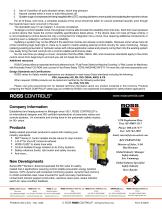
Use of 3-position all ports blocked valves, which trap pressure Hazard created when a hose or tube fitting blows off Sudden surge of compressed air being reapplied after LOTO, causing cylinders to move quickly and subjecting the machine to shock For all of these, and more, a complete analysis of the circuit should be taken to uncover potential hazards, even though the hazards have never occurred in the past. The standards say if it can happen, it must be considered. To design a control reliable circuit, the engineer must be able to break the reliability chain into links. Each link must...
Open the catalog to page 4All ROSS Controls catalogs and technical brochures
-
safety product
32 Pages
-
Line-Mount Valves
16 Pages
-
DM2
4 Pages
-
MD3
16 Pages
-
CM series
4 Pages
-
Press Industry Solutions
28 Pages
-
DM2 Series D
16 Pages
-
Safety-Related Products
32 Pages
-
Modular Pneumatic Solutions
8 Pages
-
Drip Leg Drains
2 Pages
-
ISO 5599 I and II VDMA 24563
20 Pages
-
Series 80 and 84 SAE Std
12 Pages
-
Series 70 and 74
12 Pages
-
L -O-X ® V a l v es
4 Pages
-
W60
4 Pages
-
foot valves
1 Pages
-
manual valve
12 Pages
-
Pilot operated check valves
12 Pages
-
safety valve
13 Pages
-
FRL ROSS
12 Pages
-
poppet valve
16 Pages
-
TSSA
48 Pages
Archived catalogs
-
ENERGYSAVER® Valve
2 Pages
-
Ross regulators
2 Pages
-
serial bus system
29 Pages
-
Dale series poppet valves
16 Pages









